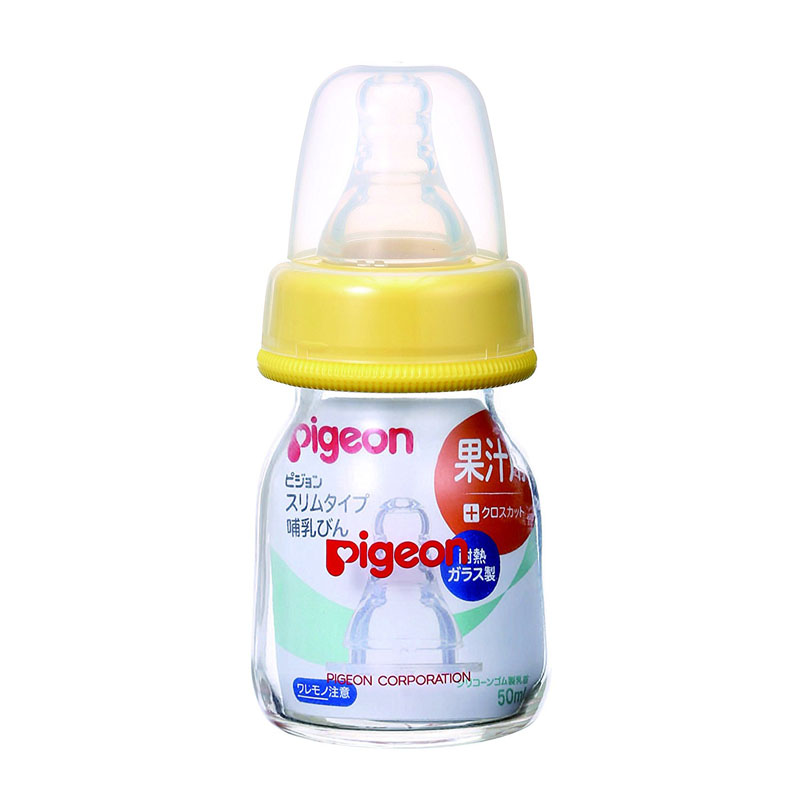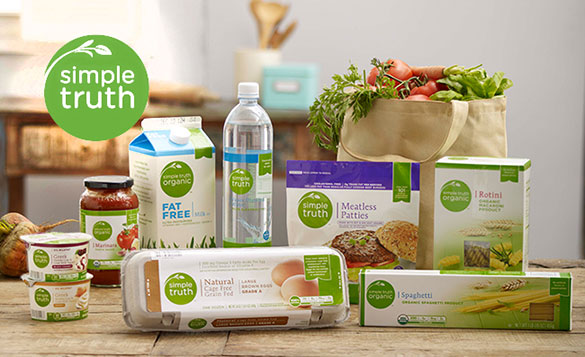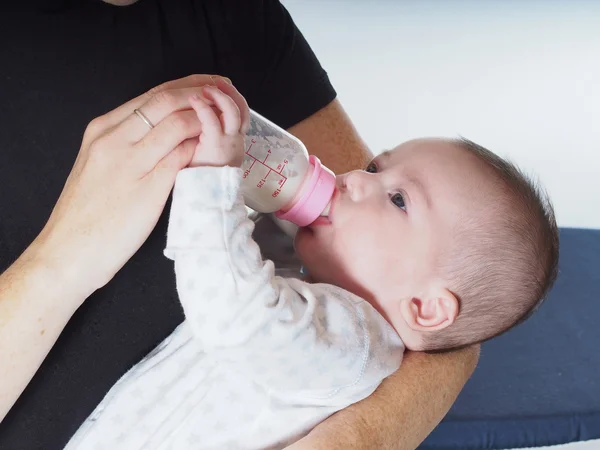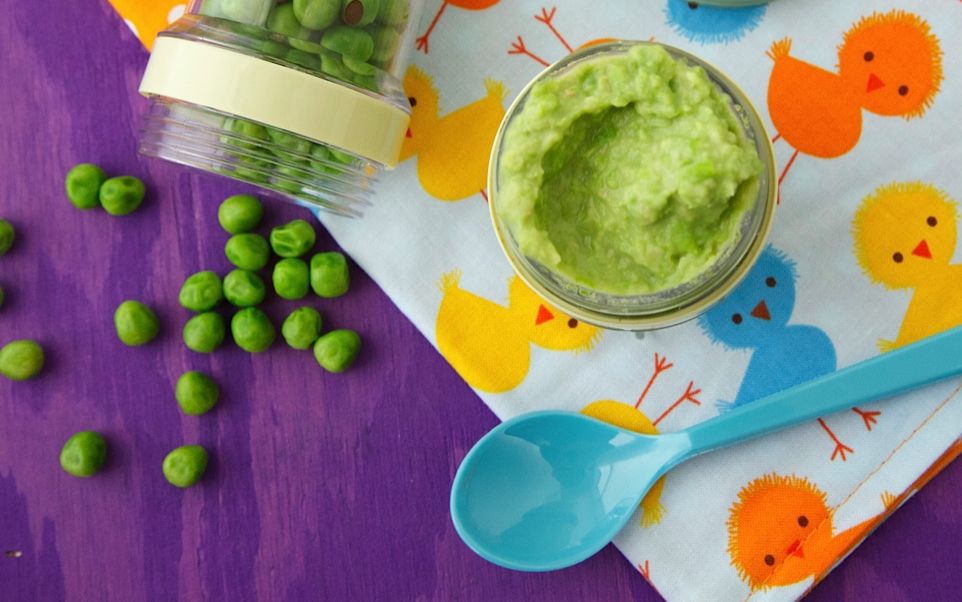Baby feeding pigeon
What Do Baby Pigeons Eat and How to Feed Them Properly
Pigeons may be seen almost anywhere. Although feral pigeons and wood pigeons are typically in towns and cities, little is known about how their babies appear, and what do baby pigeons eat in case you come across a starving one.
Pigeons or doves are wild birds that feed on a variety of foods. Pigeons, whether wild or farmed, usually have the same diet of seeds, small insects, and reptiles. But what about baby birds? Are their foods different from those of the adult pigeon?
This article will give you the answer by going into details about baby pigeons’ food and some tips on baby pigeon care. Mostly, newborn pigeons’ diet depends on crop milk in the first week and crushed foods with low sugar and salt levels later on. You also have to keep the baby warm and prepare a syringe to feed it.
Table of Contents
- How Does a Baby Pigeons Look?
- What Do They Eat?
- What to Feed a Starving Baby Pigeon?
- 1.
Look for newborn birds formula
- 2. Use non-dairy milk (Macadamia milk prefered)
- 3. Use infant cereal without milk powder
- 1.
- How to Feed Baby Pigeons?
- Conclusion
When newly born, pigeon chicks are generally about 5 centimeters long. Their skin is pink or black with a patchy coating of yellow that will later turn into white feathers. Their beak is typically pinkish, sometimes it can be a deeper hue and their feet are in slate grey.
In comparison with the body, their beak, wings, and feet are relatively larger; however, as the chicks grow older, their bodies will develop more evenly. Baby pigeon eyes’ are closed when they are born and not opened until they are four or five days old.
In general, unless you domestically raise pigeons or manage to wander around a pigeon’s nest, you’ll never get to see the chicks in this condition; nevertheless, this is rare because birds nest in high and remote areas. We usually observe baby pigeons once they hit their juvenile age, which is mostly identical to the adult form.
We usually observe baby pigeons once they hit their juvenile age, which is mostly identical to the adult form.
Newborn pigeons less than four weeks old are called squabs, and they are not yet able to fly.
What Do They Eat?Both of the parent birds provide regurgitated crop milk to their newborn pigeons. Crop milk, often known as pigeon milk, is a secretion of the crop lining (a ‘container’ where pigeons store food until digestion). It also contains a lot of proteins and fats. For the first four days, this is regurgitated to the squabs within two hours after hatching.
They will be given crop milk and seeds for the next 5 days. About nine days after hatching, the baby pigeons will be fed an adult meal. This includes fruits, seeds, and invertebrates on occasion.
The food amount provided to young birds grows by the day, especially when seeds or grains are included. During the first week, both parents must feed two newborns. After that, one adult can usually nurse two squabs.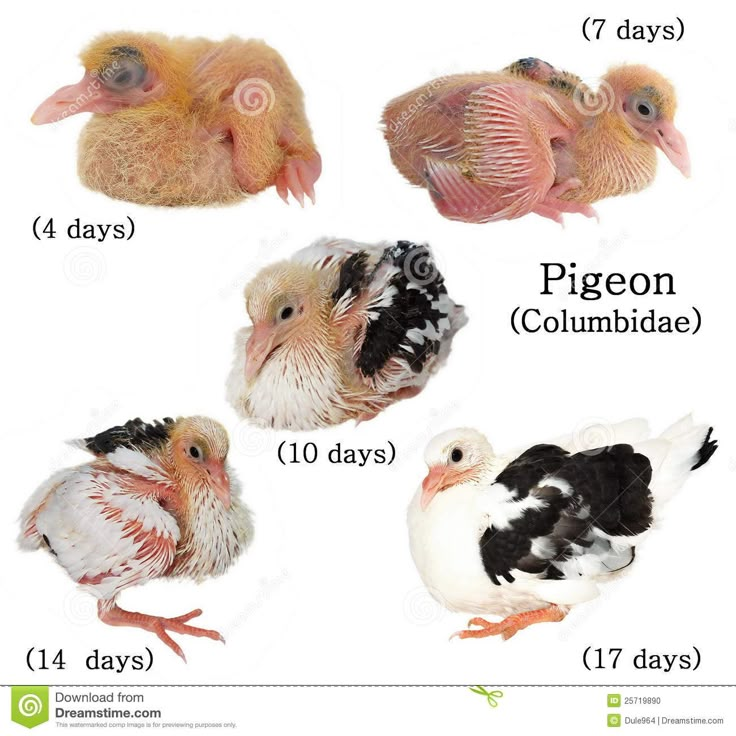
After one week, squabs will be able to eat a variety of food along with its crop milk. Only during the third week do baby pigeons no longer need crop milk and their metabolism can adapt to adult pigeon food.
What to Feed a Starving Baby Pigeon?If you come across a newborn pigeon on the ground, it is better to just leave it alone. It will usually live better without your intervention; if you believe you know better, you generally don’t. If you do believe that there is a problem with a pigeon, please contact a local wildlife rehabilitation facility in your neighborhood.
On the rare occasion you have to raise the baby bird yourself, you should know what and how to feed it. As you do not have their parents’ crop milk, things are more complicated in the first weeks but let’s see how these following tips may help you.
1. Look for newborn birds formulaYou can check out the two popular formulae: Nutribird A21 or Kaytee Extract.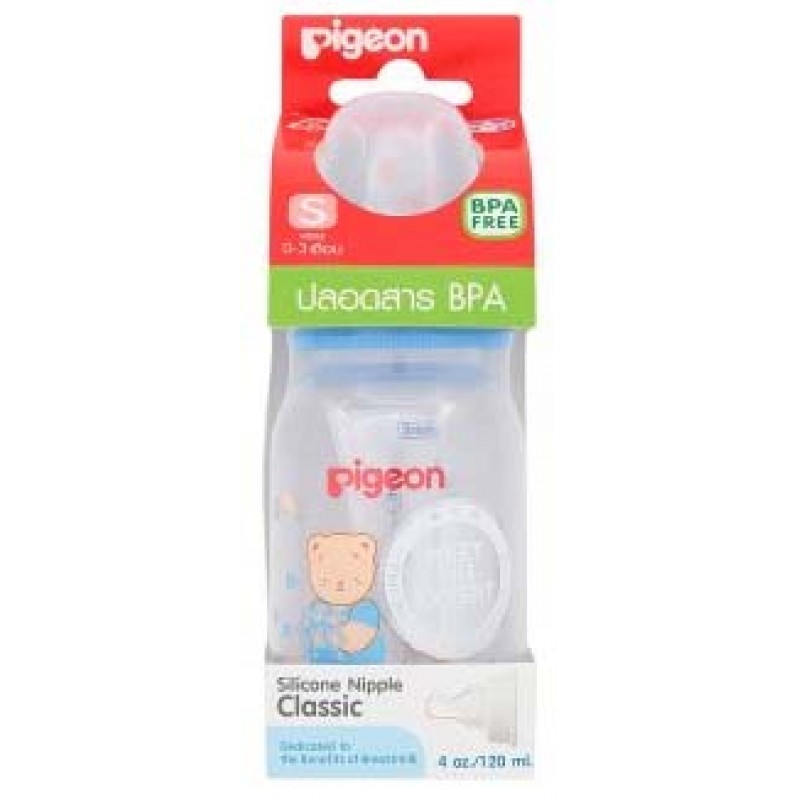 These can be easily purchased from pet stores or online. However, ready-made bird formulae may be rather costly. Your local wildlife rehabilitation team may also be able to assist you if the bird is of a wild species.
These can be easily purchased from pet stores or online. However, ready-made bird formulae may be rather costly. Your local wildlife rehabilitation team may also be able to assist you if the bird is of a wild species.
During the first days, you mix the formula with warm water until it looks like skim milk. Then, you can make it consistent like ketchup after 10 days.
2. Use non-dairy milk (Macadamia milk prefered)If you can’t find any baby bird formula or prefer to make the food on your own, you can try non-dairy substitutes like Macadamia milk and blend it following this recipe from The International Dove Society. You will need:
- 71 grams of chicken baby food
- 1 boiled egg yolk
- 15 grams of low-fat yoghurt
- ¼ teaspoon of corn oil
- ¼ diluted vitamin E
- 2 drops of cod-liver oil
- little pinch of vitamin B
- 25 milligrams of vitamin C
- 247 milligrams of calcium carbonate
Put all the ingredients in the blender and mix them up thoroughly.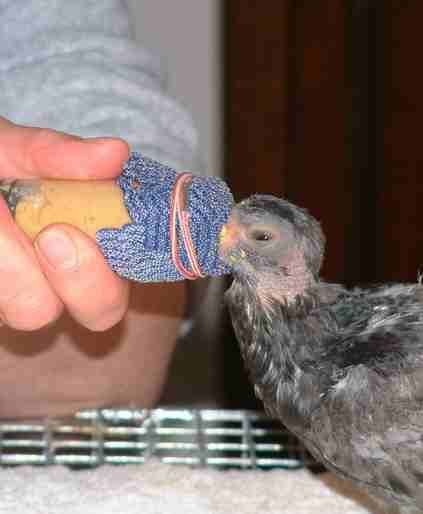 During the first 3 days, you can add a bit of digestive enzymes to the food and wait 30 minutes before feeding the baby. From the second week, you can feed it with seeds, grains, and pigeon foods.
During the first 3 days, you can add a bit of digestive enzymes to the food and wait 30 minutes before feeding the baby. From the second week, you can feed it with seeds, grains, and pigeon foods.
You can use dairy-free baby cereal if you don’t have any options. Mix the cereal with warm water until it reaches skim milk consistency. However, you should only use this if you are in a hurry and the baby is already three to four days old. You should find better alternatives as soon as possible.
Puppy biscuits are another alternative, but they must be soaked in warm water until they are softer.
How to Feed Baby Pigeons?The baby pigeons should be warmed up before feeding. You should put the baby in a box near a 40-watt desk like a reptile bulb. You may also use a low-temperature heating pad or a bottle of hot water but make sure to wrap anything you use in a towel.
When it’s too cold, a newborn pigeon can’t digest the food. Actually, the poor little bird is meant to be brooded over by their parents and kept warm during their first two weeks.
Actually, the poor little bird is meant to be brooded over by their parents and kept warm during their first two weeks.
You should prepare a syringe (with no needle) to pull up the food. First, you need to remove the plunger and wrap the broad end with a self-adhering bandage or dental rubber dam.
Then, use a rubber band to keep it in place and make a hole on it big enough for the baby’s beak. The baby bird will eat from the little hole just like pigeons usually eat from their parents’ mouth. You can gently wipe up any spills on the bird using a warm-water-dipped cotton ear swab.
When the baby is eating, you should keep an eye on its crops to make sure that it consumes enough food. The crop sits directly above the baby’s breastbone and stores food for digestion. If you see the baby regurgitates food, you need to stop because you have overfed it.
Or you can watch for another feeding technique here by AAyan Loft
ConclusionFeeding baby pigeons not only requires knowledge about their special diet but also how to feed them properly. Baby pigeons require adequate nutrition, which primarily includes crop milk. However, you can try alternatives like premade bird meals, the special recipe with MAC milk, or non-dairy infant cereal. Make sure that the food is tender and warm.
I hope you find this article on what do baby pigeons eat helpful, especially when you raise a baby pigeon yourself. If you have any questions or experience with the baby pigeon, feel free to share with us!
Moreover, you also can refer more to other interesting topics of birds:
- Baby mockingbird foods.
- How long can birds go with no food?
- What foods do dodo birds eat?
How to Take Care of a Baby Pigeon Properly – Pigeonpedia
If you are going to hand-rear a baby pigeon, you need to commit to the full process until the bird is able to fend for itself.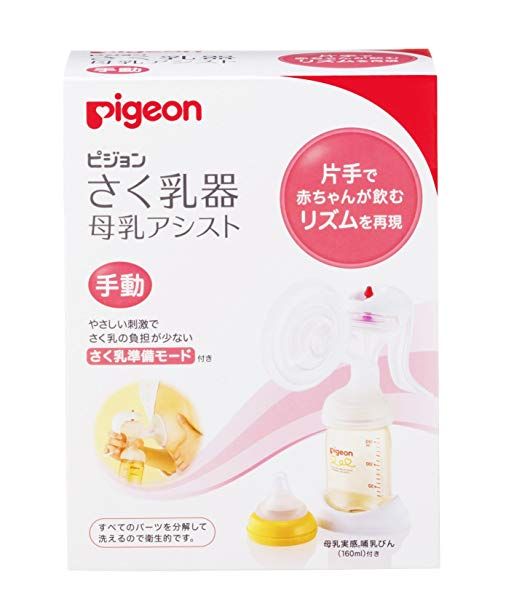 Knowing how to take care of a baby pigeon means understanding each stage of its development and what to feed it, how to feed it, and when. It means mimicking much of the behavior of pigeon parents, including feeding them hatchling formula milk.
Knowing how to take care of a baby pigeon means understanding each stage of its development and what to feed it, how to feed it, and when. It means mimicking much of the behavior of pigeon parents, including feeding them hatchling formula milk.
As an Amazon Associate, I may earn a small fee from qualifying purchases at no extra cost to you. This helps us run the site – thanks for your support!
To properly look after a baby pigeon you will need:
- A heat pad or 40-watt heat lamp
- Pigeon hatchling formula milk
- Plastic feeding syringes
If you’re considering breeding pigeons, understanding how to care for the babies is also pretty important.
Proper care of newborn pigeons ensures their survival and ensures that you are raising healthy birds.
Use this guide to help you along the way.
Understanding Baby Pigeons
Pigeon parents are good at caring for their own babies, but if you’re breeding them or you have one with an inattentive mother, it makes sense to know what you’re up against before getting started.
Before you can care for a baby pigeon, it’s a good idea to have an understanding of what you can expect when they hatch.
Generally, it takes about 18 days for a pigeon to hatch once the mother lays her eggs (pigeons generally lay up to 2 eggs at a time).
If you’ve found an abandoned pigeon egg read our article on how to care for a pigeon egg here.
Unlike many other species of birds, pigeon babies stay in the nest for up to six weeks in some cases.
This means that your baby pigeons will need more care in the nest than other kinds of birds.
You can expect your baby pigeons to look more like adults by the time they are ready to leave the nest. Knowing this helps you make the right care choices for your pet birds.
After Hatching
You might be surprised to learn that hatching is very hard work for a baby pigeon and once it’s free of its shell, it will need to rest for about 12 hours before you need to feed it or do any other kinds of care.
The exception to this is if the baby pigeon is in distress, in which case, it’s probably best to have a veterinarian who is experienced with taking care of baby birds have a look at your pigeon.
Top Tip: If you ever find an abandoned baby pigeon and are wondering how old it is, use our pigeon age chart to work it out.
Keeping Your Baby Pigeon Warm
In general, a baby pigeon will spend the first couple of weeks of its life being brooded by the parent pigeons, so without that parent, it falls on you to keep the baby bird warm.
You won’t need to put them near a fireplace or in direct sunlight.
They will only need a gentle source of warmth, such as a heating pad set on the low level or a 40-watt heating bulb like you might use for a pet lizard.
You might also try a pet snuggle heating pad, which you can find in pet stores, or a water bottle filled with warm water and wrapped in a towel.
Make sure your baby pigeon has access to this heat at all times for the first few weeks of its life.
Some experts recommend keeping their area at about 90 degrees. You can line their box or nesting area with newspaper to help hold the heat inside.
What Do Baby Pigeons Eat?
Your baby pigeon will likely sleep for the first 12 hours after hatching and you won’t need to feed it during this time.
Once it’s awake, however, you will need to feed your baby pigeon every couple of hours.
Make sure the bird is warm before feeding it. If it is cold then it won’t be able to digest its food and feeding it could kill it.
Also, do not heat food in a microwave as you don’t want to risk scalding the bird. The correct temperature for baby pigeon food is 39 degrees centigrade.
Pigeon parents feed the babies crop milk, which is a partially digested liquid that the baby bird takes directly from the mother or father bird’s mouth.
When you feed your baby pigeon, the food will need to be similar in consistency and nutrients to crop milk. There are a few ways you can do this.
Hatchling Formula
The easiest way is to buy pigeon hatchling hand-rearing formula products at pet supply stores.
These proprietary feeds are designed to mimic crop milk and will contain all the nutrients a baby pigeon needs as well as the enzymes to enable the food to be digested.
Keep in mind that you’ll need to gradually thicken the formula and increase the amount you offer as the days go by.
Good feed brands will include instructions to achieve this but you should start off with a consistency similar to skimmed milk and by ten days, it should be the consistency of thick ketchup.
Each kind of formula is a bit different so be sure you read the directions carefully and speak with a veterinarian if you need assistance.
Homemade Food Suitable for a Baby Pigeon
If you don’t have hand-rearing formula available, there are some alternatives, though you should talk to your vet before using them as they may not always provide the nutrition your baby pigeon needs.
These alternatives include
- oatmeal
- baby formula
- soft fruits and vegetables rolled into small balls using breadcrumbs
You can also buy chick crumbs ready-made from pet supply stores and Amazon.
Although the baby pigeon may indicate hunger by having a gaping open beak, do not feed too often.
Things to Not Feed Your Baby Pigeon
Contrary to what you might have heard, baby birds don’t actually eat worms, nor should you give them dairy milk as you might offer to other baby animals.
These items are not safe for a baby pigeon and won’t provide the nutrients they need to grow.
Non-dairy kinds of milk such as nut milks are suitable but they should be diluted with water. Macadamia nut milk is considered the best of non-dairy milks.
Foods that aren’t recommended for baby pigeons can make them very sick or even kill them, so it’s vital to make sure your baby pigeon is getting the right things to eat. Pigeon hatchlings with feathers
Pigeon hatchlings with feathers
What to Feed a Baby Pigeon With Feathers?
Baby pigeons grow quickly so a hand-rearing diet should follow the appropriate timeline.
Newborn pigeons have little or no feathers. After a couple of days, the fluffy little feathers will begin to grow.
During the first four to five days while the feathers are growing, a baby pigeon being raised by pigeon parents will be fed crop milk. After this, they will be fed crop milk along with a few seeds.
On the 9th/10th day, the parents will offer a baby pigeon an adult diet along with the crop milk.
If you are hand-rearing a baby pigeon, you should follow the same pattern. Much like with human babies, you wean a baby pigeon off the liquid/formula diet onto solids.
By two weeks old, the bird should be completely covered with juvenile feathers and along with the formula (or formula substitute) you can feed it a diet of
- wild bird seed
- defrosted frozen peas
- defrosted sweetcorn kernels
- finely chopped apple
- finely chopped peanuts
- finely chopped fat balls
- finely shredded greens
- wholemeal bread crumbs
Each item should be dropped into the crop one piece at a time until the crop feels like a squishy bean bag.
After each feeding, dip the bird’s beak in clean warm water to encourage it to drink.
Always make sure the crop is empty before the next feeding session.
By week three, a baby pigeon can digest adult food and will not require crop milk.
How to Feed Your Baby Pigeon
Now that you know what your baby pigeon needs to eat, you need to learn how to offer that food to them, which isn’t as easy as it might sound.
For the most part, you will want to mimic the natural feeding methods of the parent pigeons.
In a natural pigeon nest, the baby bird will insert its beak into the mother or father pigeon’s mouth and the crop milk will be transferred from parent to baby.
You can do this by feeding your baby pigeon the food you’ve chosen via a small plastic syringe, a clean plastic bag or a small baby bottle. Give your baby pigeon the chance to open its beak so that you can gently transfer the food into its crop.
It’s important to note that baby pigeons get stressed very easily and you need to be on the lookout for this during feeding.
Since hand feeding your baby bird is different than in the wild, the baby’s instincts may make it difficult at first.
If you notice your baby is in any kind of distress or appears to be breathing through an open beak, back off and give the bird a chance to rest before you attempt to feed it again.
Too much stress in a baby pigeon can lead to a heart attack so pay close attention to its stress levels and adjust your feeding time and methods accordingly.
This article was written by our qualified veterinarian Cristina.
This is part of our commitment to providing you with the most trustworthy veterinary advice for your pigeons.
How Much To Feed a Baby Pigeon
You know what to feed your baby bird and how to feed it, but now you need to know how much the baby needs to eat.
You can use your baby pigeon’s crop as a guide for feeding.
The crop can be found between the throat and stomach.
Because all pigeons have a differently sized crop, this is your main means of determining how much it needs to eat.
Monitor the crop as you feed and stop when it feels a bit soft and squishy. It should feel like a balloon that’s filled about three-quarters full with liquid.
A baby bird also has small bubbles on its shoulders that fill up when it’s had enough to eat.
When they’re full, stop feeding. Overfeeding your pigeon can be deadly so pay close attention as you feed.
Once the crop has become flat and the baby pigeon is cheeping for food, you can feed it again.
Most experts suggest allowing the crop to completely empty at least every 24 hours.
That’s because if you overfill it, the baby may end up with pockets that can trap food and lead to sour food that can make your baby pigeon ill by causing sour crop.
If the crop doesn’t appear to be emptying regularly, contact your veterinarian for advice.
Also Read: Do Pigeons Leave Their Babies?
A Home for Your Baby Pigeon
Feeding your baby pigeon and keeping it warm are the two most important things you can do for your pet bird.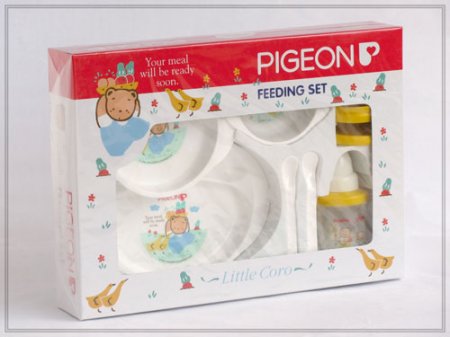 However a comfortable home is also vital.
However a comfortable home is also vital.
Making a bed that’s similar to the nest is great. A basket lined with a towel is an easy way to do this.
Be sure that there’s a solid base on the bottom to stabilizes the baby’s feet so they don’t splay, which can lead to feet problems as the pigeon gets older.
Never use things the baby might eat, such as sand or wood chips.
As the baby gets older, be sure that its bedding is wide and large enough to give it space to spread its wings so they can become strong and prepare it to leave the nest.
Sources:
- Comparing the Effect of Different Management and Rearing Systems on Pigeon Squab Welfare and Performance after the Loss of One or Both Parents.
Dove • Arzamas
You have Javascript disabled. Please change your browser settings.
- History
- Art
- Literature
- Anthropology
I'm lucky!
Author Elena Generozova
1 / 4
Louis Jean-Francois Lagrené.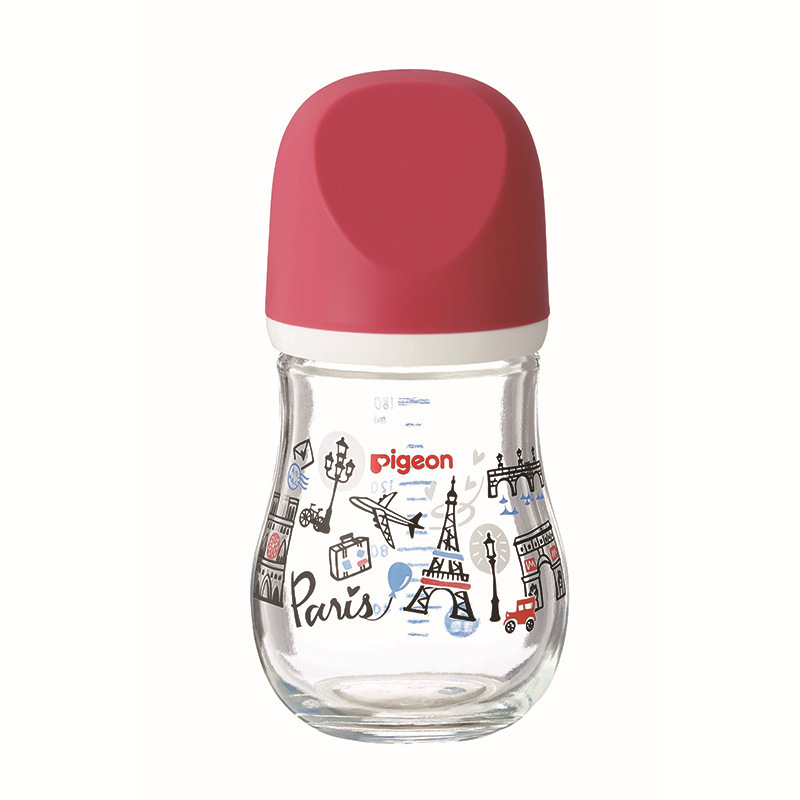 Mars and Venus (Allegory of the world). France, 1770 J. Paul Getty Trust
Mars and Venus (Allegory of the world). France, 1770 J. Paul Getty Trust
2 / 4
Animals leaving the ark. Mosaic of the Basilica of San Marco. Venice, first half of the 12th century © DeAgostini / DIOMEDIA
3 / 4
Holy Trinity. Hungary, 1471 Magyar Nemzeti Galéria / Wikimedia Commons
4 / 4
Pablo Picasso. A child with a dove. 1901 © Pablo Picasso / pablopicasso.org
In culture, the dove is often opposed to the eagle or the raven: good to evil, meekness to strength. Among the Semitic peoples of the East, the dove was associated with the goddess of love, Ishtar, and in Ancient Greece, doves were dedicated to Aphrodite, they were grown in the sanctuaries of this goddess. Even then, "doves" were affectionately called lovers, and disparagingly - prostitutes. The connection of the dove with Aphrodite and Venus will continue even later, until the era of the Renaissance and the New Age. nine0004
In Holy Scripture, the dove is also a positive hero. After the flood, when the rain stopped and Noah's ark ended up on dry land, on Mount Ararat, Noah released a dove and a raven to see if there was still land left somewhere. The raven did not return, but the dove returned, carrying a fresh olive branch in its beak. But most often in Christian culture, the image of a dove is associated with images of the Trinity: the dove is a symbol and embodiment of the Holy Spirit. In the Middle Ages, such iconography was less common (the Church was wary of the image of what is invisible), but in the Renaissance, this plot became very common. nine0004
Microstrues
Daily short materials that we have produced for the past three years
deck of
French Souvenir
Beast to
Swan
Ethnonymous Day
Belorussa
9000 to the knowledge of Tolkien's trilogyRadio Arzamas In
black and blackroom…
A new episode of the podcast about modern folklore "Pah-pah-pah!" — about children's horror stories
Best New Year's gifts in Arzamas Store
New Year's gifts: sweatshirts, bags, gift subscriptions and even the "Create a Museum" game!
"Arzamas Store" To the store! Arzamas Store
Adult pigeons are everywhere, but why don't we see pigeons?
- Henry Nichols
- BBC Earth
Sign up for our 'Context' newsletter: it will help you understand the events.
image copyrightRobert Claypool CC by 2.0
Correspondent BBC Earth decided to find the answer to a seemingly unimportant question that, as it turns out, torments many of us.
In almost any settlement you can see pigeons - the most common and common urban birds. Gray-gray, white, sometimes black or brown, they walk, shaking their heads, along sidewalks and parapets, sit on the walls and facades of buildings, coo softly and strew the surroundings with excrement and feathers.
Watching them, you pay attention to one oddity: we see old and lame pigeons, adults and experienced, young and stupid, barely managing to fly out from under the wheels of passing cars. However, for some reason we never see pigeons.
But there are plenty of pigeons around. And there are no pigeons. How does it happen?
We have addressed this question to our readers through social networks and have also conducted some research ourselves.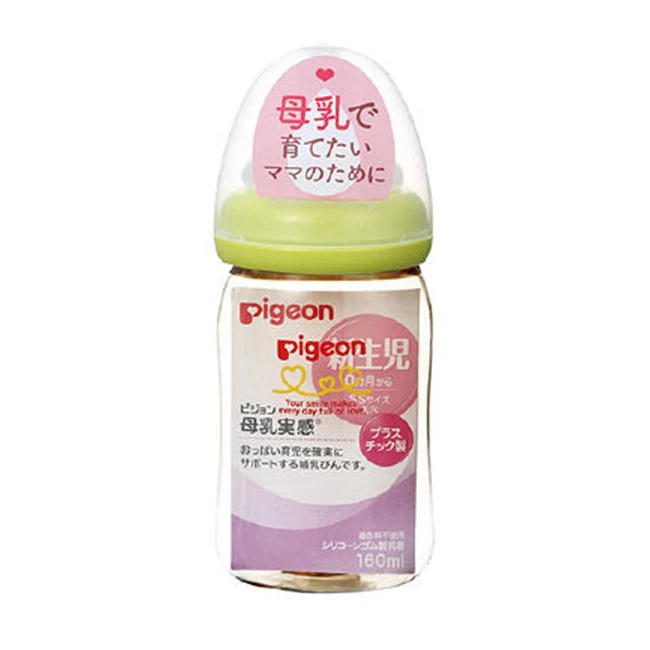 And here's what we found out.
And here's what we found out.
"Wealthy pigeon parents usually rent elite private dovecotes to incubate their eggs," suggests our reader Thomas Keith. nine0004
An interesting idea. But, as Jennifer Austin, Kelly Mahan, and others have pointed out, the answer rather lies in the origin of pigeons as a species.
Pigeons inhabiting cities are descendants of wild rock pigeons, in fact they are one and the same bird. They, of course, were somewhat urbanized, but in matters of procreation they retained the habits of their ancestors - and they always tried to hide their nests as best as possible.
Image copyright, Free Casters CC by 2.0
Image caption,Pigeons, doves... They seem to be everywhere. But where are the pigeons? nine0004
Skip Podcast and continue reading.
Podcast
What was that?
We quickly, simply and clearly explain what happened, why it's important and what's next.
episodes
The End of the Story Podcast
The rock dove (Columba livia species) likes to nest on cliffs. "In their natural, wild state," writes William Yarrell in A History of British Birds, "rock doves live on high cliffs near the coast, in the crevices of which they spend most of the year." nine0004
For example, in the 19th century, ornithologists wrote about the population of rock pigeons in the Orkney Islands off the coast of Scotland: "Very numerous, they breed in rock crevices, but their nests are at such a depth that it is impossible to reach them."
Other naturalists have noted that rock pigeons live in "deep underground caverns overlooking the sea" in the neighboring Shetland Islands.
In the distant past, when people spent more time in and around caves, no one would blink an eye when they saw pigeons (also called squabs). nine0004
For example, during the excavation of a cave in Gibraltar, it turned out that Neanderthals ate pigeons with pleasure even at a time when there were no modern people in Europe.
Photo copyright, Nishanth Jois CC by 2.0
Photo caption,Two pigeons in a nest that we usually can't get to
Many years later, when Homo sapiens settled in the same cave instead of Neanderthals, they didn't either disdained dove for dinner. In prehistoric times, therefore, young pigeons often came across to people not only in the eyes, but also on the skewer. nine0004
But in modern cities there is an acute shortage of comfortable rocks, crevices and caves.
Therefore, pigeons have to look for other options for settlement, in hidden places away from human eyes - in church bell towers, abandoned buildings or under bridges.
Alison Goggin saw pigeons only once, "in a crack in the stone stairs" in the Welsh castle of Carmarthen. "Perhaps they like the feeling of being safe in hard-to-reach places," she suggested on the BBC Earth Facebook page. nine0004
And since we rarely climb into such places, we rarely see the contents of pigeon nests either.
Maybe it's for the best. According to Sara Rochel, pigeons are "terrible as a mortal sin."
Photo copyright, Ingrid Taylar CC by 2.0
Photo caption,Juvenile pigeons don't have a greenish-purple tinge around their necks
What about young pigeons that have recently learned to fly? Should we see them?
So it is. There are many young pigeons around, but, as our readers note, they are not very easy to distinguish from adults. nine0004
The fact is that squabs, as if embarrassed by their appearance, do not leave the nest for a very long time: from hatching from eggs to leaving the nest, they take more than 40 days, about twice as long as most garden birds.
At first, the parents feed the chicks with "pigeon milk" produced in the crop, a nutrient mixture rich in proteins and fats. Pigeons fly away from their native nest fully grown and very similar to adult birds.
But a trained eye will completely distinguish one from the other. Juvenile pigeons do not have a greenish-purple tint around the neck, and the cere (wart-like skin at the base of the mandible) is pink-grey instead of the bright white of adults. nine0004
Juvenile pigeons do not have a greenish-purple tint around the neck, and the cere (wart-like skin at the base of the mandible) is pink-grey instead of the bright white of adults. nine0004
Photo copyright, Thomas Quine CC by 2.0
Photo caption,Bright white cere of adult pigeons
"Looking at a pigeon perched on a window ledge or under a park bench, you never know if it might be a youngster in disguise" , writes Brian Waas.
But although pigeon chicks are rarely seen, many of our readers have seen them.
Sister Gwen Obertrak, for example, had a pair of pigeons living on her balcony in Germany. And Amy Dunkley, from her bedroom window, watched the entire life cycle of a pigeon. "It was wonderful," she writes. nine0004
The wide window cornices of one of the libraries at the University of Texas at Austin are perfect for nesting pigeons, notes Tony Salazar Loftin.
And Judy McIntosh stumbled upon a dove ("half feathered and half down") last month on her way to a compost pile in her garden in Hampshire, England.